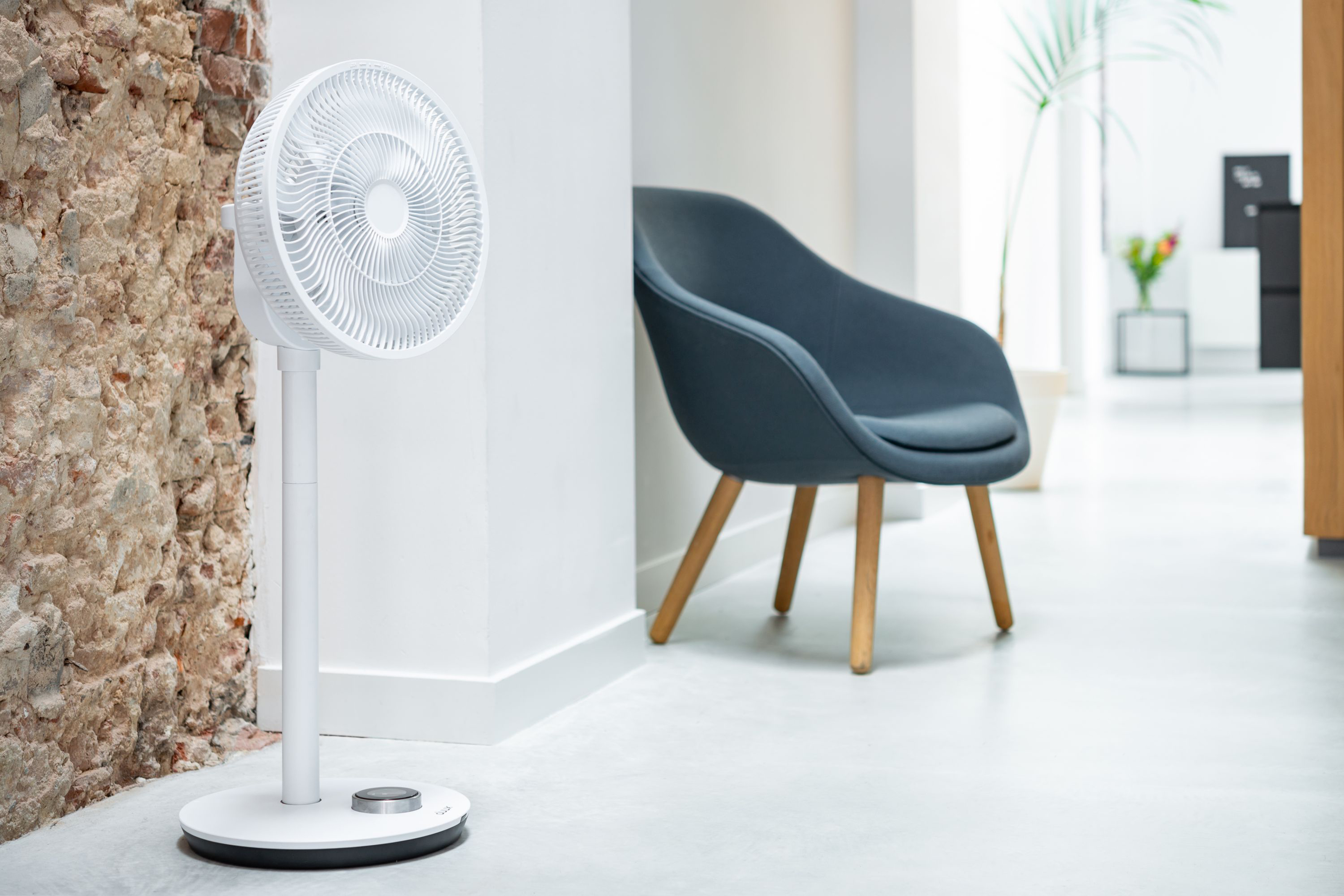How to use a fan to cool down a room - expert hacks to make your fan work harder during hot weather
Learn how to use a fan to cool down a room more efficiently with these quick hacks


You might think you know how to use a fan to cool down a room already – you just switch it on, right? But in actual fact, fans don't cool down your room in the way that an air conditioning unit can.
They do relieve some of the struggles of living in high temperatures, circulating air and making you feel cooler, but even the best modern fans won't actually lower the temperature of your room by themselves.
There are, however, still good reasons to use a fan. 'While air conditioning systems are powerful and undoubtedly effective in cooling down a room, fans are easily the most energy-efficient and, therefore, cost-effective solution,' says Chris Michael, managing director of Meaco.
'A fan blowing cool air around a room is far cheaper than running an air conditioner, in fact, the difference in energy consumption is quite staggering,' he adds.
There are also simple hacks to make your fan work harder for you during hot weather, helping to bring down the overall temperature of your home if you use them in the right way. Here are our top hacks you need to know for a heatwave.
How to use a fan to cool down a room
Think of it this way, a fan cools down your body thanks to the sensation of air movement, but not the room at all, so there's no point putting a fan on in a room you're not using. With a few simple additions, or by using the fan in a specific way at a certain time of day, you can help shift the balance in your favour and keep your room cooler.
1. Try the ice trick
This idea isn't new, but it's a tried and trusted hack to make a fan act more like an air conditioner that can help you better sleep in the heat. 'A simple trick is to place a bowl of ice in front of the fan to cool the air,' says Hayley Thistleton, a sleep expert at SleepSeeker. Make sure to put the bowl on a tray, or similar, to catch any condensation as the ice melts.
The Livingetc newsletters are your inside source for what’s shaping interiors now - and what’s next. Discover trend forecasts, smart style ideas, and curated shopping inspiration that brings design to life. Subscribe today and stay ahead of the curve.
If you find that ice cubes are melting too quickly, 'try bottles of frozen water instead,' Hayley adds. These should last longer and still cool the air being circulated by the fan.
2. Use a fan to cool your home at night
One of the best ways to use a fan in extreme weather is to cool down a room once the temperature drops outside.
'Instinctively, the first port of call is often to open a window as far as possible, but consider this: is the air outside cooler than the air inside?' asks Meaco's Chris Michael. 'If the answer is no, you may want to keep the window shut.'
Once the evening sets in, you might find that your home has retained heat from the day, while the outside temperature has dropped. Here's where your fan can help to cool your home effectively.
Once the temperature outside is lower, open windows on either side of the house to create a cross-draft. Then place a fan by one of the windows, facing outwards. This will help to draw out and displace the hotter air inside your home with the cooler air outside. If you have another fan, use it in the room to help circulate the air coming in from outside, too.
3. Ensure ceiling fans are going in the right direction
Ceiling fans can feel like a lifesaver in absence of air conditioning, but did you know that the direction they rotate matters? In summer, fans should be set to rotate counterclockwise. This creates a downdraft that generates that air movement factor that generates that cooling sensation. In winter, they can be set to rotate clockwise, which creates an updraft that can help distribute warm air from your home's heating system.

Hugh is Livingetc.com’s editor. With 8 years in the interiors industry under his belt, he has the nose for what people want to know about re-decorating their homes. He prides himself as an expert trend forecaster, visiting design fairs, showrooms and keeping an eye out for emerging designers to hone his eye. He joined Livingetc back in 2022 as a content editor, as a long-time reader of the print magazine, before becoming its online editor. Hugh has previously spent time as an editor for a kitchen and bathroom magazine, and has written for “hands-on” home brands such as Homebuilding & Renovating and Grand Designs magazine, so his knowledge of what it takes to create a home goes beyond the surface, too. Though not a trained interior designer, Hugh has cut his design teeth by managing several major interior design projects to date, each for private clients. He's also a keen DIYer — he's done everything from laying his own patio and building an integrated cooker hood from scratch, to undertaking plenty of creative IKEA hacks to help achieve the luxurious look he loves in design, when his budget doesn't always stretch that far.